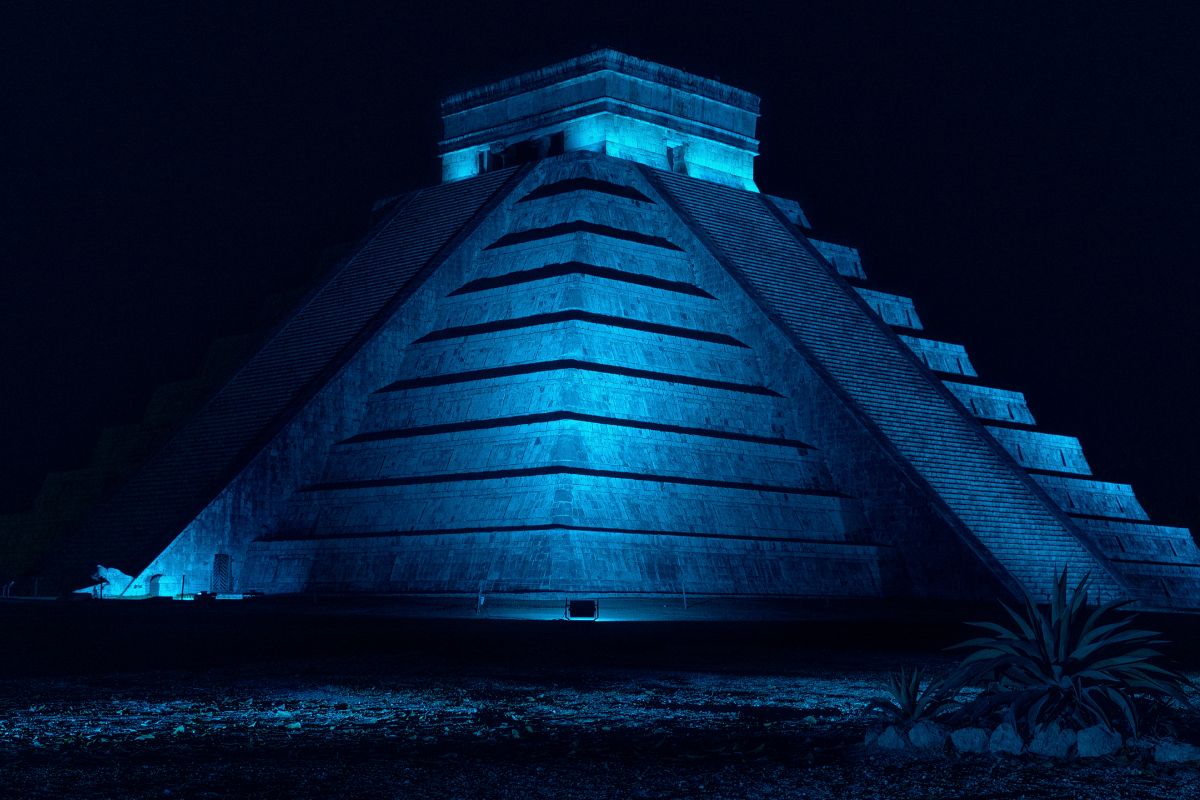Mayan Architecture represents one of the most extraordinary legacies of ancient world civilizations, embodying a sophisticated understanding of cosmology, engineering, and artistic mastery.
The monumental cities of the Maya exhibit advanced construction techniques, precise astronomical alignments, and unique regional styles that evolved over millennia.
This architectural tradition flourished in southeastern Mexico, Guatemala, Belize, Honduras, and El Salvador, and shows clear cultural continuity with Olmec predecessors and parallel Mesoamerican societies. The architecture integrates pyramids, palaces, ballcourts, observatories, and ceremonial plazas, reflecting a deep relationship with nature, time cycles, and sacred geography.
Maya cities were designed as ceremonial centers, harmonizing the natural landscape with human-made structures to honor deities, mark agricultural cycles, and sustain complex social orders. The enduring legacy of these structures continues to inspire architects, scholars, and spiritual practitioners worldwide.
Major Architectural Styles in the Maya World
| Style | Geographic Focus | Key Characteristics |
|---|---|---|
| Preclassic Olmec-Proto-Maya | Gulf Coast, Chiapas, Petén | Massive earth platforms, early pyramids (La Venta), stelae traditions. |
| Petén Style | Central Lowlands (Tikal, Uaxactún) | Tall pyramids with steep stairways, roof combs, monumental plazas. |
| Usumacinta River Style | Yaxchilán, Bonampak, Palenque | Intricate stucco reliefs, ornate lintels, flowing iconography, cross-shaped sanctuaries (Palenque). |
| Puuc Style | Northern Yucatán (Uxmal, Kabah, Labná) | Mosaic stone facades, smooth lower walls, ornate friezes, colonnades. |
| Chenes Style | Central Yucatán (Hochob, Santa Rosa Xtampak) | Monster-mouth doorways, heavily decorated facades, vertical massing. |
| Río Bec Style | Campeche, Quintana Roo | False towers, rounded corners, high decorative towers without functional rooms. |
| East Coast Style | Quintana Roo Coast (Tulum, Xcaret) | Compact buildings, coastal watchtowers, mural painting tradition. |
| Comalcalco Style | Tabasco (westernmost Maya) | Brick masonry, influence from western Mesoamerica, rare in the Maya zone. |
| Copán Valley Style | Honduras (Copán, Quiriguá) | Ornate sculptures, hieroglyphic stairways, zoomorphic altars, elaborate acropolises. |
| Highland Maya Style | Guatemala Highlands (Kaminaljuyú, Iximché) | Low platforms, emphasis on plazas, post-classic muralism, adobe use. |
| Late Postclassic Maya-Toltec Style | Chichén Itzá | Blended Toltec-Maya features: serpent columns, colonnades, large ballcourts, feathered serpent motifs. |
Comprehensive List of Major Mayan Archaeological Sites
